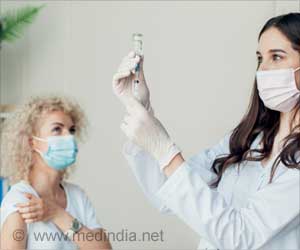How different drugs move through the placental barrier was identified by Engineers using microfluidic technology through caffeine.

‘Technology unveils how compounds are transferring from placenta to fetus, which aids to prescribe safe drugs in appropriate dosage forms.’
Read More..




The placenta develops inside a woman’s uterus during pregnancy. Through the umbilical cord, it provides oxygen and nutrients to the fetus and removes waste from the fetal bloodstream. Read More..
Animal models of the placenta don’t translate well to human health, Hashemi said. And because of the temporary nature of the placenta, there haven’t been a lot of human studies. Those that have been done have shown inconsistent results.
The engineers’ placenta model is described in a paper just released online by the scientific journal Global Challenges published by John Wiley & Sons Inc. Hashemi is the corresponding author. Co-authors are Rajeendra Pemathilaka and Saurabh Aykar, Iowa State graduate students in mechanical engineering; Jeremy Caplin, a former Iowa State graduate student now at Georgia Tech; and Reza Montazami, an Iowa State associate professor of mechanical engineering.
The paper will also be featured on the cover of a print edition of the journal.
A grant from the Office of Naval Research and a Young Researcher Prize to Caplin from the Lush company supported development of the placenta model.
Advertisement
Then they had to figure out how to effectively grow cells on either side of a porous, biocompatible membrane that would separate the two channels and represent the placental barrier. They also had to identify the right compound to test using the model so they could understand transport from the maternal side to the fetal side.
Advertisement
It’s a relevant medical question: Because of unknown effects from maternal caffeine intake on the fetus, health authorities such as the World Health Organization have recommended restricting caffeine intake during pregnancy.
It’s also an important question to Hashemi: “I drink a lot of tea,” she explained, a cup of tea sitting on her office desk. “This is personal to me.”
And does caffeine from mother’s tea or coffee make it into baby’s bloodstream? Tests with the model say some of it does.
The engineers introduced a caffeine concentration of 0.25 milligrams per milliliter – a concentration deemed safe by U.S. Food and Drug Administration guidelines – to the maternal side of the model for an hour and then monitored changes over 7.5 hours, according to the paper.
At six and a half hours, the maternal side reached a steady caffeine concentration of 0.1513 milligrams per milliliter and the fetal side reached a steady concentration of 0.0033 after five hours.
Now that they’ve demonstrated their technology, Hashemi said the model is being used with research partners at Ohio State University’s College of Medicine to study how different drugs move through the placental barrier.
There has also been interest in studying how environmental toxins are transported from mother to fetus, she said. Future studies could include personalizing the technology – actually tuning the model with cells from a mother or fetus to help prescribe medicines or dosages. And maybe one day researchers could study the effects of placental transport of chemicals and compounds on individual cells.
“We are trying to model the real placenta,” Hashemi said. “Now that we have this placenta-on-a-chip technology in place, we can collaborate with researchers working on all kinds of projects.”
Source-Newswise






